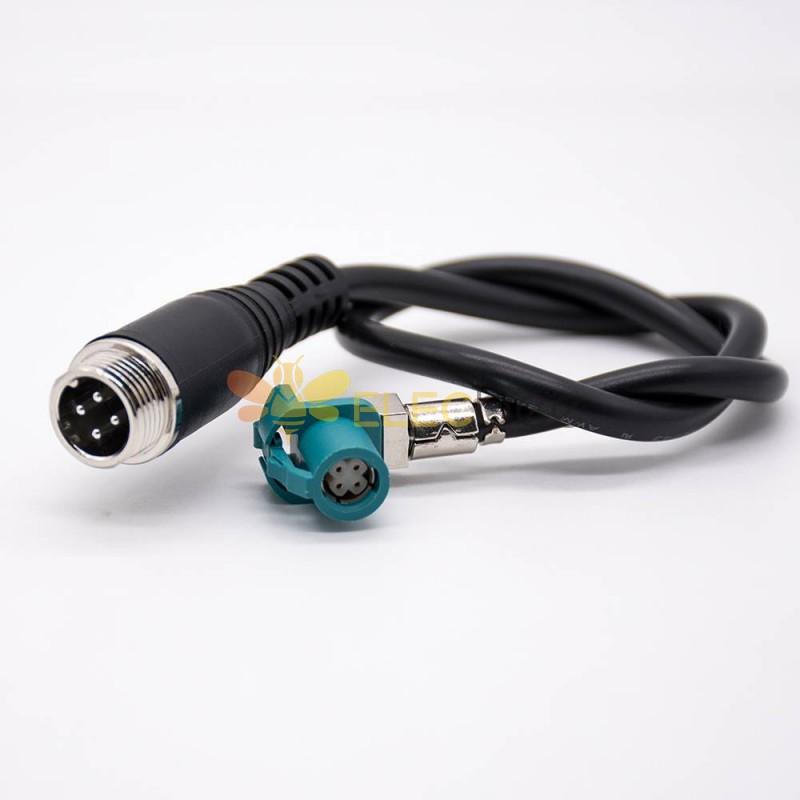Connectors are essential components in modern electronics, enabling the efficient transfer of data and power between devices. Different connectors are designed to meet different requirements and applications, and two of the most widely used connectors in the automotive industry are Fakra and HSD. If you're wondering what the difference between these two connectors is and which one you should use for your application, this article will provide a comprehensive comparison of Fakra and HSD connectors.

Introduction to Fakra and HSD Connectors
Fakra and HSD connectors are both used in automotive applications, but they differ in their design, specifications, and features. Fakra (FAKRA) is a standardized coaxial connector system that was developed in Europe for the automotive industry. It is designed to provide a high-quality, reliable, and cost-effective solution for connecting various components in vehicles, including multimedia systems, GPS antennas, and other electronic devices.
HSD (High-Speed Data) connector, on the other hand, is a type of connector that was developed by TE Connectivity for high-speed data transfer between devices. It is designed to meet the demands of modern automotive systems that require high-speed data transmissions, such as infotainment systems, cameras, and sensors.
Design and Features: Fakra vs HSD Connector
Fakra connectors come in various types and colors, each designed for a specific application or frequency range. They are available in male and female versions, and the color-coding system ensures that the correct connector is used for the specific function. The Fakra connector system is designed to be easy to install, with a snap-on mechanism that ensures a secure connection.
HSD connectors, on the other hand, are designed to provide high-speed data transfer between devices. They feature a shielded twisted pair cable that reduces electromagnetic interference and ensures a stable and reliable connection. HSD connectors are available in different sizes and configurations, including single-ended and differential, to meet the specific requirements of different applications.
Compatibility: Fakra vs HSD Connector
One of the key differences between Fakra and HSD connectors is their compatibility with different devices and systems. Fakra connectors are widely used in European vehicles, and many manufacturers have adopted the Fakra standard as their preferred connector system. However, Fakra connectors are not commonly used in other regions, such as North America and Asia, where different connector systems are preferred.
HSD connectors, on the other hand, are designed to be compatible with a wide range of devices and systems, including multimedia systems, cameras, sensors, and infotainment systems. They are widely used in the automotive industry and are compatible with many different connector systems, making them a popular choice for manufacturers and designers.
Performance: Fakra vs HSD Connector
When it comes to performance, both Fakra and HSD connectors have their strengths and weaknesses. Fakra connectors are designed for high-frequency applications, and their impedance matching ensures a stable and reliable connection. They are also designed to be resistant to vibration and shock, making them ideal for use in vehicles.
HSD connectors, on the other hand, are designed for high-speed data transfer, and their twisted pair cable ensures that the signal remains stable and reliable. They are also designed to be resistant to electromagnetic interference, which can be a problem in automotive applications.
Cost: Fakra vs HSD Connector
The cost of Fakra and HSD connectors can vary depending on the specific type and configuration. However, in general, Fakra connectors are more cost-effective than HSD connectors. This is because Fakra connectors are standardized and widely used in the European automotive industry, which means that they are produced in large quantities and are readily available.
HSD connectors, on the other hand, are more expensive because they are designed for high-speed data transfer and require more advanced technology and materials. They are also not as widely used as Fakra connectors, which means that they are produced in smaller quantities and are less readily available.
Conclusion
In summary, the choice between Fakra and HSD connectors depends on the specific requirements of your application. If you need a connector that is cost-effective, easy to install, and designed for high-frequency applications, Fakra connectors may be the best choice for you. On the other hand, if you need a connector that can provide high-speed data transfer, is compatible with a wide range of devices and systems, and is resistant to electromagnetic interference, HSD connectors may be the better choice.
Ultimately, the choice between Fakra and HSD connectors comes down to your specific needs and requirements. By understanding the differences between these two connectors, you can make an informed decision and choose the best connector for your application.

